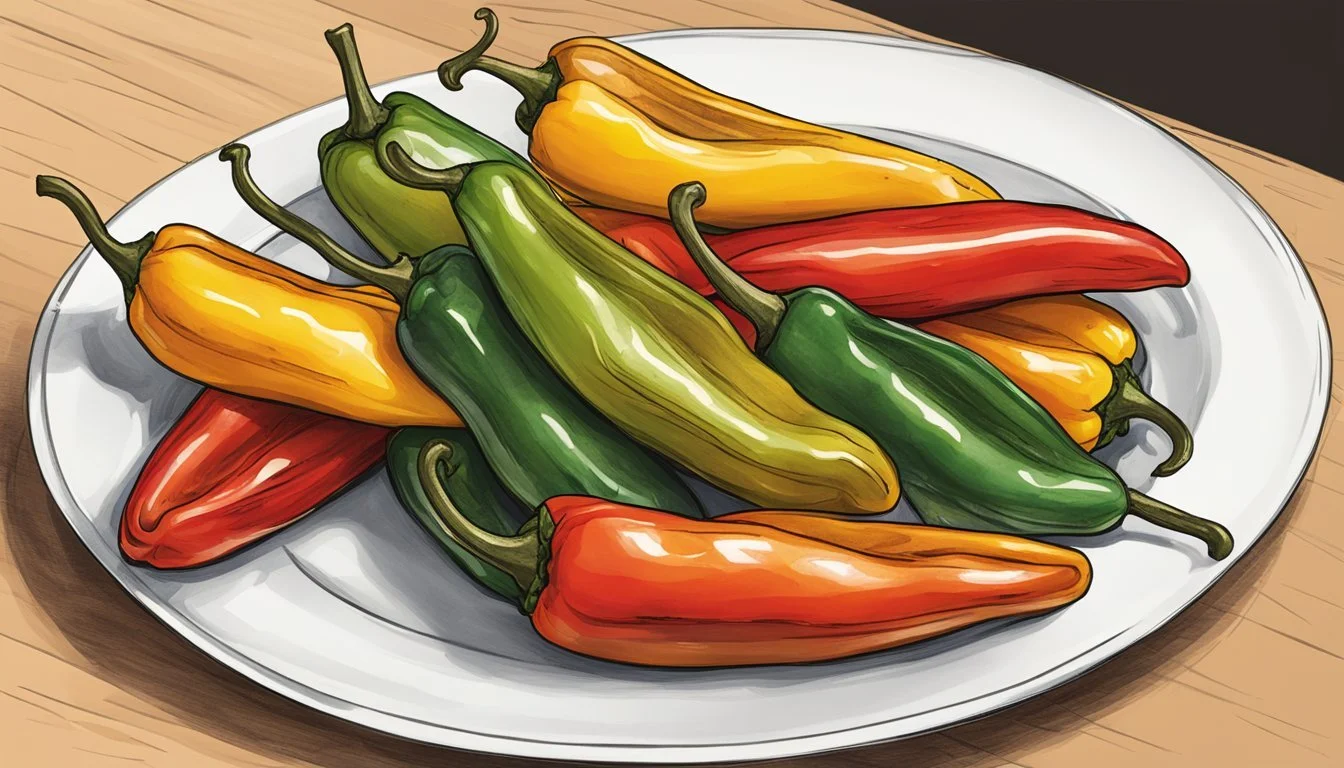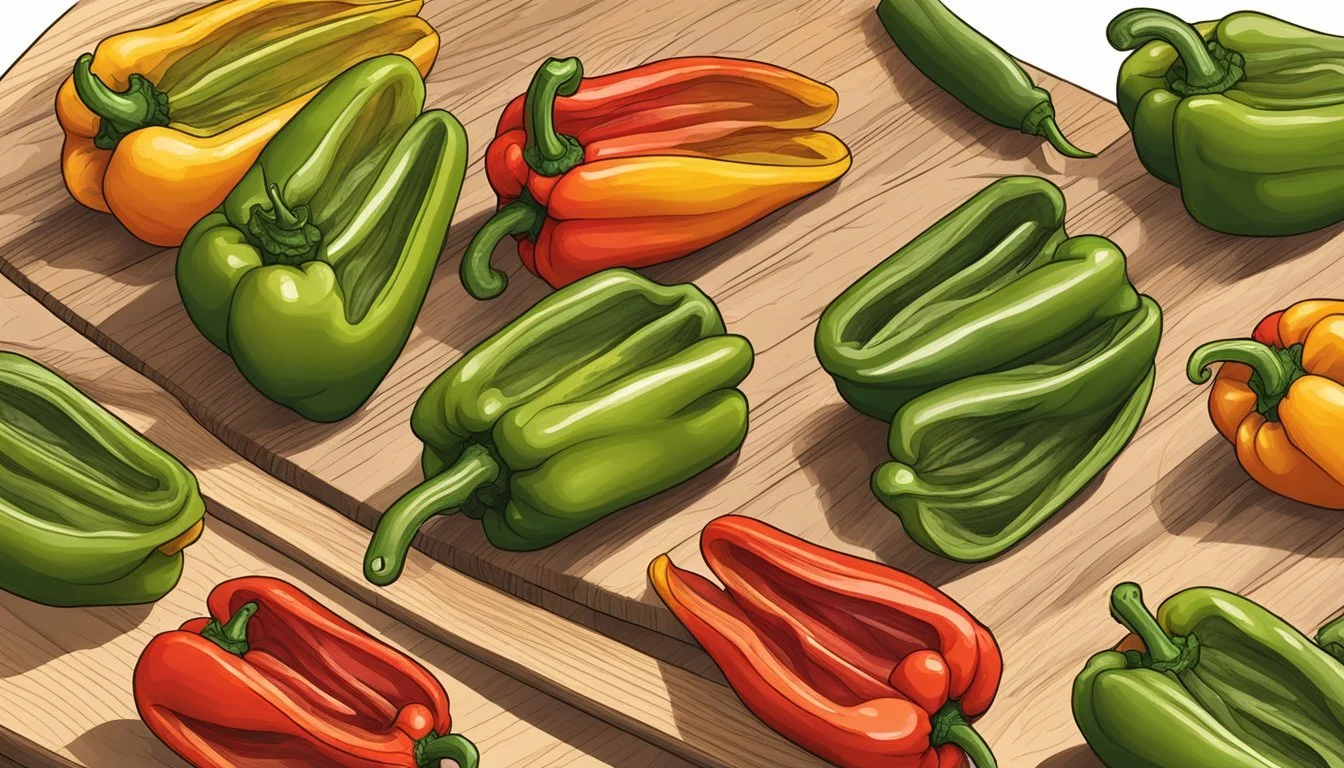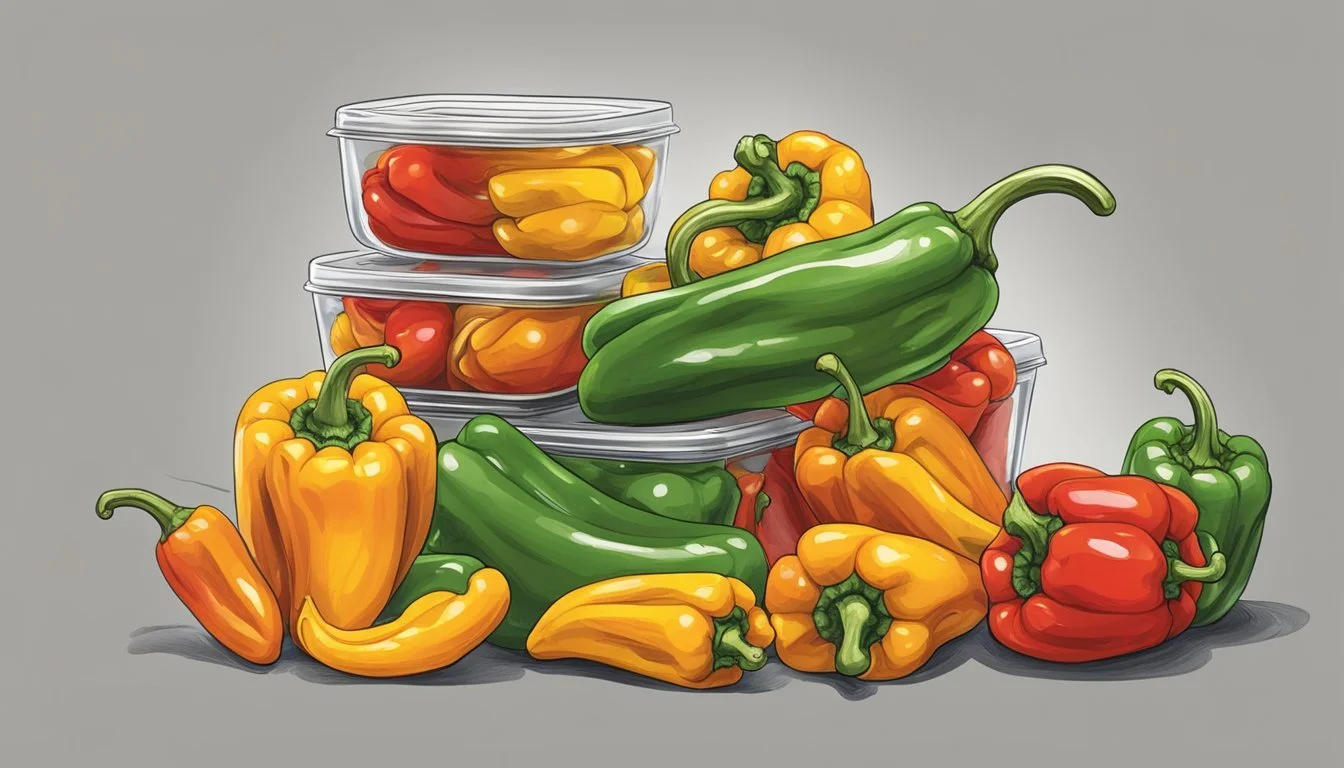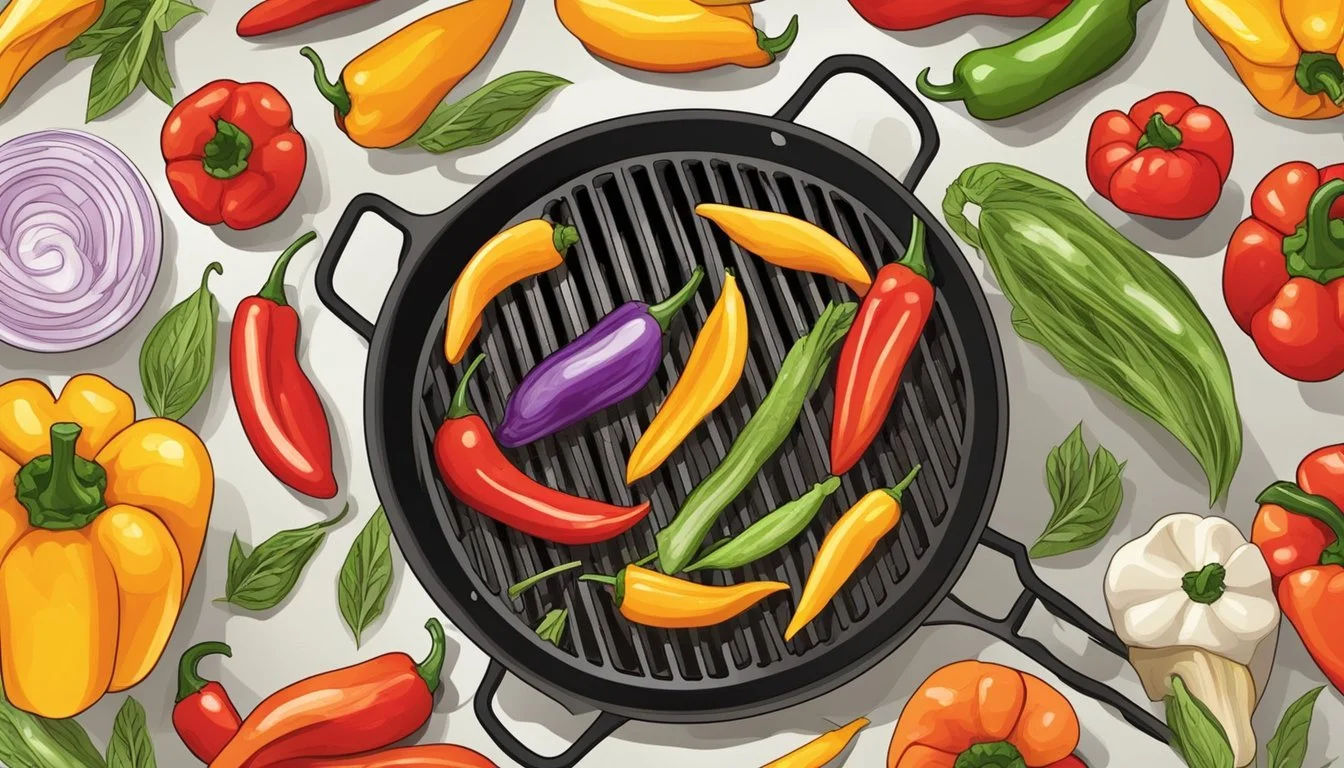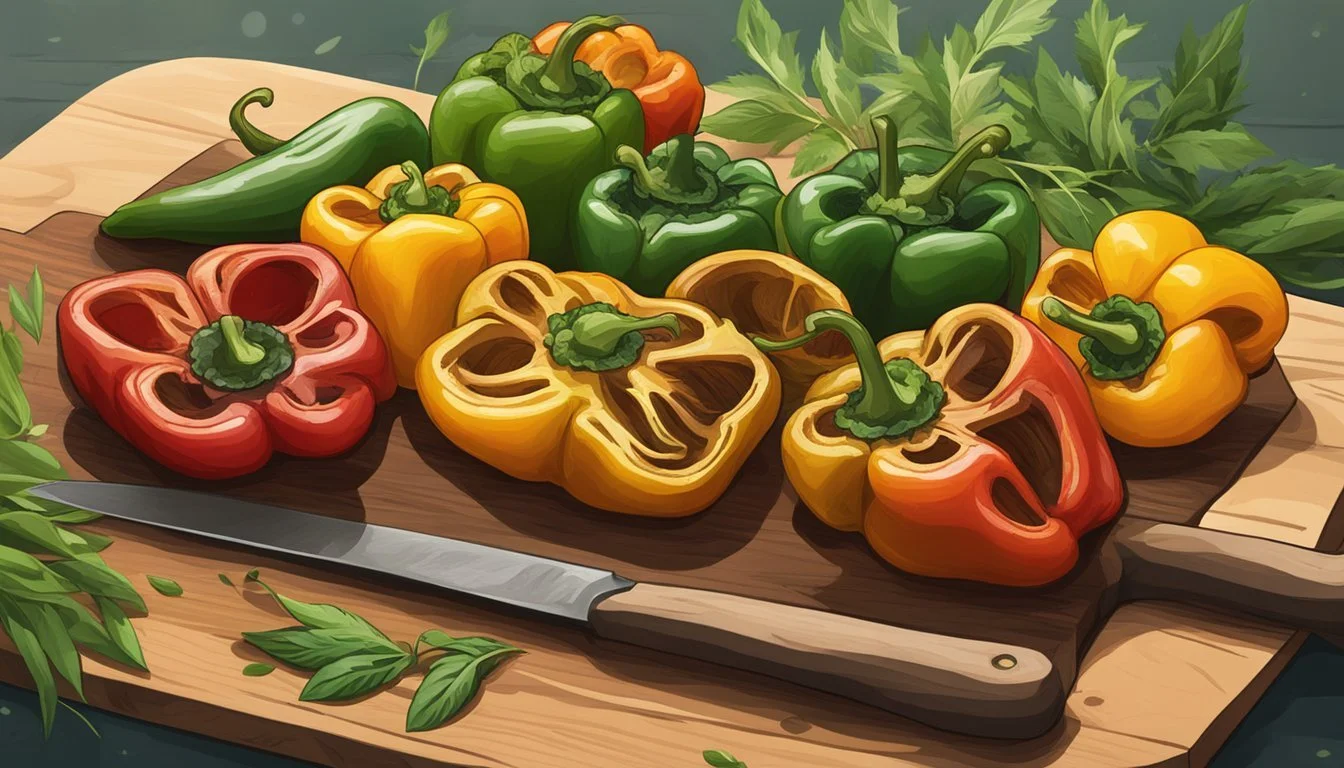How Long Do Gluten-Free Grilled Peppers Last?
Storage Tips and Shelf Life
Grilled bell peppers are a delicious and versatile addition to any meal, especially for those adhering to a gluten-free diet. Rich in nutrients and flavor, these peppers can be easily prepared and stored to extend their usability. By following best practices for storage, one can enjoy the convenience of having pre-grilled, gluten-free bell peppers ready for future meals.
When stored properly in an airtight container in the refrigerator, gluten-free grilled bell peppers can last for about three to four days. This makes them an excellent option for meal prepping and quick, healthy eating. Their vibrant colors and robust taste can enhance various dishes, from salads to main entrees.
Ensuring the peppers are cooked thoroughly and stored promptly will help maintain their quality and safety. Freezing them can also extend their shelf life significantly, allowing them to remain fresh for up to a year when kept in proper freezer-safe bags or containers. This makes it easy to have a supply of flavorful grilled peppers on hand for various culinary uses throughout the year.
Understanding Gluten-Free Grilled Peppers
Gluten-free grilled peppers are a nutritious and flavorful option for anyone following a gluten-free diet. They are easy to prepare and offer a wide range of health benefits, making them perfect for summer grilling.
The Basics of Grilling Peppers Gluten-Free
To begin, select fresh bell peppers. Clean and slice them in half, removing stems, seeds, and pith. Preheat the grill to medium-high heat (375 to 450 degrees). Coat the peppers with olive oil and sprinkle with salt and pepper for seasoning. Use a grill basket or make a foil tray to prevent cross-contact with gluten.
Turn the peppers frequently to ensure they cook evenly. They should be grilled for about 10-15 minutes until tender and slightly charred. Proper grilling ensures that the peppers maintain their texture and flavor.
Nutritional Profile of Grilled Bell Peppers
Grilled bell peppers are not only gluten-free but packed with nutrients. They are low in calories, with an average medium pepper containing about 30-40 calories. Peppers are high in vitamins A and C, which are essential for immune health and skin.
Additionally, they contain fiber, which is beneficial for digestive health. The fat content in grilled peppers is minimal, primarily coming from the olive oil used in grilling. They also offer a small amount of protein. This makes grilled peppers a low-calorie, nutrient-dense food ideal for a healthy diet.
Preparing Grilled Peppers
Selecting the right peppers, cleaning and seasoning them properly, and mastering grilling techniques ensure perfect char and flavor.
Selecting the Right Peppers
The ideal choice for grilled peppers is typically bell peppers due to their size and robustness. Available in various colors like red, yellow, orange, and green, bell peppers offer a mix of sweetness and mild bitterness. Look for firm, glossy peppers without soft spots or wrinkles. Freshness is key since older peppers may lack the firm texture needed for grilling.
Cleaning and Seasoning
Begin by washing the peppers thoroughly under cold water to remove any dirt or pesticides. Pat them dry with paper towels. Cut the peppers in half and remove the seeds and membranes for a smoother texture. Drizzle with olive oil and season generously with kosher salt and freshly ground black pepper. This basic seasoning enhances the peppers' natural flavors and complements the smoky taste from the grill.
Grilling Techniques for the Perfect Char
Preheat the grill to medium-high heat (around 375 to 450 degrees Fahrenheit). If using a grill basket, place it on the grill during preheating. Alternatively, fold a large piece of aluminum foil in half, prick several holes with a fork, and fold up the edges to create a makeshift tray. Place the peppers directly on the grill grates or in the prepared grill basket. For even cooking, grill the peppers for 5-6 minutes per side until they are tender and slightly charred. Flip halfway through to ensure even charring.
Serving and Pairing Grilled Peppers
Grilled peppers are versatile and delicious, making them a fantastic addition to various dishes and occasions. They can be served in numerous ways, paired with a wide variety of foods and enhanced with a range of condiments and seasonings.
Creating a Colorful Vegetable Plate
Grilled peppers add vibrant colors to any vegetable plate. They pair well with other grilled veggies such as zucchini, eggplant, and asparagus. For a balanced platter, include raw vegetables like cherry tomatoes, cucumber slices, and carrot sticks.
To make the plate more filling, add protein-rich options like boiled eggs or slices of avocado. Including cheeses such as mozzarella, feta, or goat cheese can add a creamy texture. A sprinkling of fresh herbs, like basil or parsley, can elevate the dish's aroma and flavor.
Dishes That Complement Grilled Peppers
Grilled peppers pair well with both meat and vegetarian dishes. Serve them alongside grilled steak, chicken, or shrimp for a hearty meal. They are also excellent with burgers, either as a topping or a side dish.
For a lighter option, add them to salads or use them in veggie bowls. Grilled peppers can enhance the flavors of Mediterranean dishes like Greek salads or Italian pasta. Mexican dishes such as fajitas and tacos benefit greatly from their smoky sweetness.
Condiments and Seasonings to Enhance Flavor
A variety of condiments can complement the taste of grilled peppers. Offer dips like tzatziki, hummus, or a tangy chimichurri sauce. Balsamic vinegar or a drizzle of olive oil can also add depth to their flavor.
Spices and seasonings can further enhance grilled peppers. Simple salt and pepper is a classic choice, but consider trying smoked paprika or cumin for a bit of heat. Fresh herbs like rosemary or thyme can bring out the peppers' natural sweetness. Italian seasoning blends are also a great match for this versatile vegetable.
Storage and Shelf Life of Grilled Peppers
Grilled peppers can maintain their flavor and freshness if stored correctly. Proper storage methods and knowing when they’ve spoiled are crucial to enjoying this versatile, gluten-free vegetable.
Optimal Storage Methods
To extend the shelf life of grilled peppers, use airtight containers. This minimizes air exposure, which can cause spoilage. Glass or BPA-free plastic containers are ideal options.
Removing the seeds and stems before storage can also prevent deterioration. Covering the peppers with a light drizzle of olive oil may help retain moisture and flavor.
Label containers with the grill and storage date to keep track of freshness. Storing peppers correctly ensures a longer, enjoyable shelf life.
Refrigeration and Freezing Tips
Refrigeration is the best option for short-term storage. Grilled peppers last 3-5 days in the fridge when kept in an airtight container.
For longer-term storage, freezing works well. Place peppers on a baking sheet, freeze them until solid, then transfer to freezer-safe bags or containers. This method prevents peppers from sticking together.
Frozen grilled peppers remain good for up to 6 months. Thaw them in the fridge overnight before using, to maintain texture and taste.
Signs of Spoilage
Recognizing spoilage in grilled peppers prevents foodborne illness. Spoiled peppers may develop a slimy texture and an unpleasant odor. Color changes, such as dark spots or mold growth, are also indicators of spoilage.
Finally, an off-taste is a clear sign the peppers should be discarded. Using fresh tongs to handle grilled peppers can reduce the chance of contamination.
By observing these signs, one can ensure their gluten-free peppers remain safe and delicious.
Incorporating Grilled Peppers into Various Diet Plans
Grilled peppers are a versatile and healthy option that can fit into a variety of dietary plans including vegetarian, vegan, paleo, low carb, and Whole30. They offer a rich source of vitamins and can enhance the flavor of many dishes.
Grilled Peppers in Vegetarian and Vegan Diets
Grilled peppers are an essential component in vegetarian and vegan diets. For vegetarians, they can be added to dishes like vegetable stir-fries, grain bowls, and sandwiches, providing both flavor and nutritional benefits.
Vegans can utilize grilled peppers in plant-based wraps, salads, and pasta dishes. When grilled, they bring out natural sweetness and a smoky flavor which pairs well with other grilled veggies. Hummus-stuffed grilled peppers can serve as an excellent protein-rich snack or appetizer.
Paleo, Low Carb and Whole30 Considerations
Grilled peppers are highly compatible with paleo, low carb, and Whole30 diets. For those following a paleo regimen, they can be used in meat and vegetable skewers or as a side dish to grilled proteins like chicken or fish.
In low carb diets, grilled peppers add essential nutrients without adding significant carbs. They can replace higher-carb ingredients in recipes like stuffed peppers, where a ground meat filling can be used.
Whole30 adherents can use grilled peppers in compliant recipes like salads or egg-based dishes. They provide a colorful and flavorful addition to meals without violating dietary restrictions.
Alternative Grilling Vegetables and Combinations
When grilling peppers, you can enhance your dishes by including a variety of other vegetables. Certain vegetables pair excellently with peppers and can create a more robust and flavorful meal.
Vegetables that Grill Well with Peppers
Zucchini and Squash: These are popular choices when grilling with peppers. They cook quickly and have a mild flavor that complements the sweetness of grilled peppers. Cut them into lengthwise slices for even grilling.
Onions: Sliced onions add a sweet and savory flavor. Grilling caramelizes their natural sugars, making them a great partner for peppers. They can be sliced into rings or wedges.
Asparagus: This vegetable is perfect for grilling due to its quick cooking time. Lightly seasoned with salt and olive oil, asparagus spears create a delightful contrast with the peppers’ textures.
Sweet Potatoes: Cut into rounds or wedges, sweet potatoes add a starchy, sweet element. They may take slightly longer to cook but are worth the effort for the added depth of flavor.
Creating a Mixed Grilled Vegetable Experience
Using a Grill Basket: A grill basket can make it easier to cook small or sliced vegetables without them falling through the grates. Mix peppers, broccoli florets, green beans, and kale for a nutritious and colorful medley.
Marinades and Seasonings: A simple marinade can elevate a mixed vegetable grill. Combine olive oil, garlic, salt, and pepper, and let the vegetables sit for at least 30 minutes before placing them on the grill.
Balanced Cooking Times: Not all vegetables cook at the same rate. Start with more dense vegetables like sweet potatoes and potatoes. Add quicker-cooking vegetables like zucchini, peppers, and asparagus later to ensure everything is done simultaneously.
Complementing Proteins: If adding proteins to your grilled dinner, consider ones that pair well with vegetables. Grilled tofu or a light fish such as salmon can complement the flavors without overpowering the vegetables.
For delicious and textured meals, combining these vegetables with peppers offers a diverse and enjoyable grilling experience.
Conclusion
Gluten-free grilled peppers can be a nutritious and delicious addition to many meals.
When stored properly, grilled bell peppers can last in the refrigerator for around 3 to 5 days. Ensure they are kept in an airtight container to maintain their freshness.
Labeling containers with the date can help track their shelf life accurately.
For those following a gluten-free diet, using simple ingredients like olive oil, kosher salt, and ground black pepper in grilling recipes can ensure the dish remains safe and enjoyable to eat.
If freezing, peppers can last up to six months. Prioritize using them in soups, stews, or reheating them for fast meals.
By following these guidelines, one can make the most out of grilled bell peppers while adhering to a gluten-free diet.

